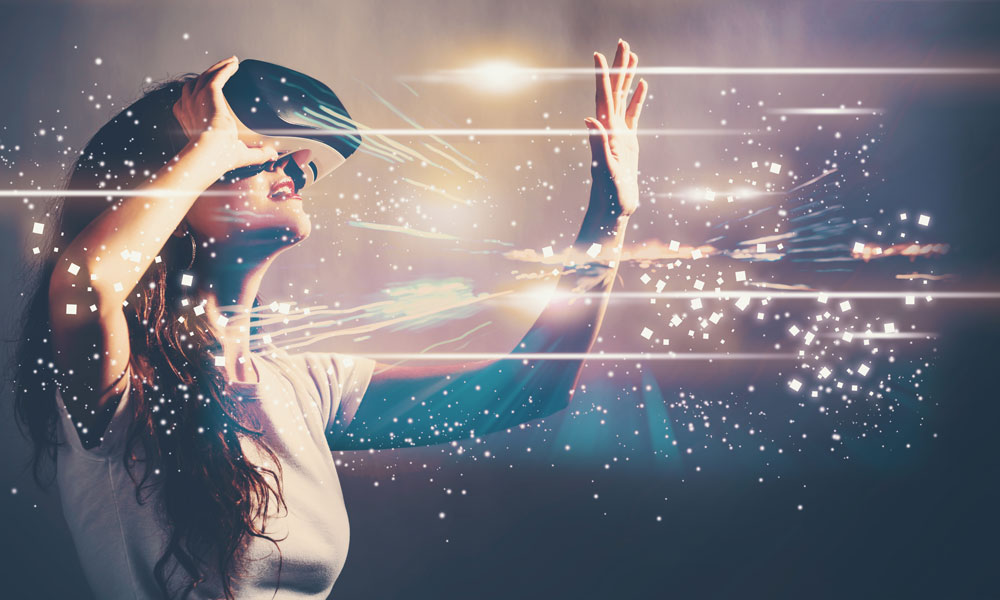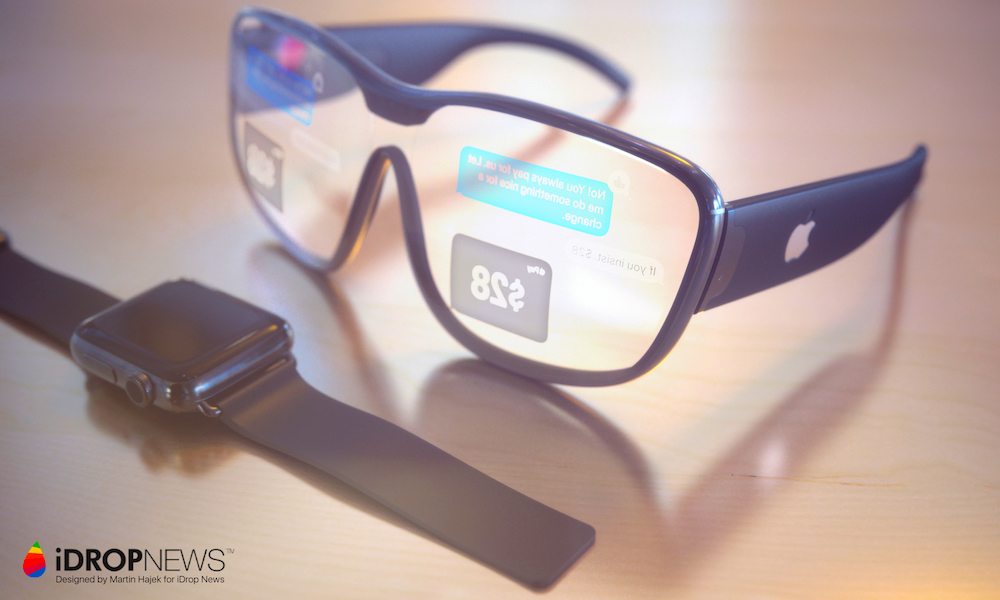Apple’s ‘Mixed-Reality’ AR/VR Headset Is Coming in June
 Credit: Ian Zelbo
Credit: Ian Zelbo
Toggle Dark Mode
It looks like there’s a light at the end of the tunnel for one of Apple’s longest-rumoured projects: its near-mythic augmented and virtual reality headset.
A new report from Bloomberg’s Mark Gurman indicates that Apple is prepping the headset for an unveiling at its June Worldwide Developers’ Conference (WWDC). However, details remain scant, and it’s entirely possible that the plan could change.
After all, it’s far from the first time we’ve heard rumours of the headset’s impending debut, only to discover later that Apple had changed its plans at the last minute — or that sources had merely misread Apple’s intentions.
Last spring, reports that Apple had shown off the headset to its Board of Directors in a secret meeting spurred hope that it could be unveiled as soon as WWDC 2022. However, it quickly became apparent that Apple was targeting early 2023; our sources initially suggested a March 2023 timeframe before more optimistically predicting a special January 2023 event.
However, in retrospect, it looked like Apple was aiming for a later timeframe, with several analysts last fall predicting an April 2023 event to introduce the new product. Even then, it was unclear when the headset would actually go on sale, as the oft-reliable Ming-Chi Kuo had suggested it wouldn’t ship until the second half of this year.
Such a timeline still wouldn’t rule out an April event. Apple has often pre-announced significant new product categories well in advance to build anticipation — the original iPhone, Apple Watch, and even HomePod come to mind — but the company’s annual WWDC event is arguably a more appropriate venue for this since Apple will need to equip developers to build apps for the new “realityOS” platform.
Still, that may be less of a strategic decision than a practical one. According to Gurman’s sources, Apple still has a few hardware and software issues that need to be fully resolved before they’re ready to show the product off to the world.
What to Expect from Apple’s AR/VR Headset
Gurman notes that Apple’s original plan was to unveil the headset at a special consumer-focused launch event. This would have set it apart from the developer-focused WWDC for a more mainstream presentation. Apple would have followed that up with more extensive technical details and development tools at WWDC to get developers ready before the device goes on sale later this year.
Now, it appears that Apple will cover all those details at WWDC, which could make this year’s keynote even more of a blockbuster than usual. While WWDC is often more focused on Apple’s software operating systems — iOS, iPadOS, macOS, and the like — the company has used the opportunity to make significant hardware announcements before. Early iPhone releases were shown off at WWDC, as was the new Mac Pro in 2019. That’s also where the original HomePod made its debut.
Reports on what to expect from Apple’s first-generation AR/VR headset haven’t changed much over the past year. It’s still expected to be powered by a Mac-grade M2 chip, with a pair of 4K virtual reality displays, a sophisticated camera array for augmented reality, and a premium price tag that will put it in “Pro” device territory. Despite the suggestion that Apple was planning an unveiling event aimed at consumers, this isn’t (yet) going to be a device for mass consumption.
In fact, with a price tag like that, some had predicted it would be targeted at the commercial and industrial market and possibly even require a monthly subscription. While the price tag suggests it’s for a limited audience, it may equally be a matter of introducing folks to the idea of a more versatile mixed-reality headset — whetting their appetites, if you will.
Apple rarely creates a new product until it can demonstrate practical, everyday applications for it. While Apple doesn’t always hit the mark in assessing a new product’s appeal, it doesn’t release “concept” or “prototype” devices. Hence, we can expect this new headset to have some useful apps and features right out of the gate.
From a software perspective, the headset is expected to feature a 3D-like view of an iPhone interface, with many of Apple’s standard apps like Messages, Mail, Safari, and TV included. A tailored version of FaceTime will offer more advanced video calling with realistic avatars, and there will be an App Store to download other apps designed for the AR/VR headset.
Not surprisingly, the biggest challenge faced by Apple engineers has been developing an intuitive user interface for the headset. It’s expected to rely on both hand and eye control, where you’ll be able to select items by looking at them and launch apps by pinching your fingers.
Apple has also faced problems with power consumption and battery life and has reportedly had to settle for using an external battery pack that will sit in your pocket.
What’s Next in Apple’s Headset Plans?
A more affordable version is also said to be in the works, which could arrive next year with less powerful components to put it more in reach of the average consumer. Nevertheless, sources within Apple say that some engineers involved with the project fear that Apple is jumping into this market prematurely without anything to set the headset apart.
That seems like a fair assessment, but if Apple plays its cards right, it may be in a position to create and define the market for practical, mainstream, and consumer-friendly AR/VR devices. Apple did this successfully with the iPhone and the Apple Watch, but a mixed-reality headset may be a tougher nut to crack.
What of Apple Glasses?
The holy grail of augmented reality is Apple Glasses, which would apply the technology to everyday eyewear rather than a cumbersome and cyborg-like headset. It’s an area that Apple has been actively pursuing, but despite a few insane rumours, it’s always been years away from reality.
Although Apple has a reputation for producing revolutionary devices that were way ahead of the curve — the original iPhone was downright magical in 2007 — it may have bitten off more than it can chew in its ambitions for Apple Glasses.
Last month, Gurman reported that Apple had indefinitely shelved its plans for lightweight AR glasses as the technology required to create them isn’t anywhere near ready. Even with an external battery pack, Apple’s bulky headset is expected to last around two hours on a single charge. Finding the components to pull this off with something the size of an ordinary pair of eyeglasses will require significant advancements in multiple areas.
Meanwhile, Apple’s AR/VR headset will usher in the next era of mobile computing, and the company undoubtedly hopes it will pave the way for more advanced wearables once the level of technology catches up with Apple’s ambitions. While Apple has pared back its work on the Apple Glasses, it still has teams exploring technologies that could make them possible someday, and Apple Glasses remain a long-term goal for the company.
[The information provided in this article has NOT been confirmed by Apple and may be speculation. Provided details may not be factual. Take all rumors, tech or otherwise, with a grain of salt.]










